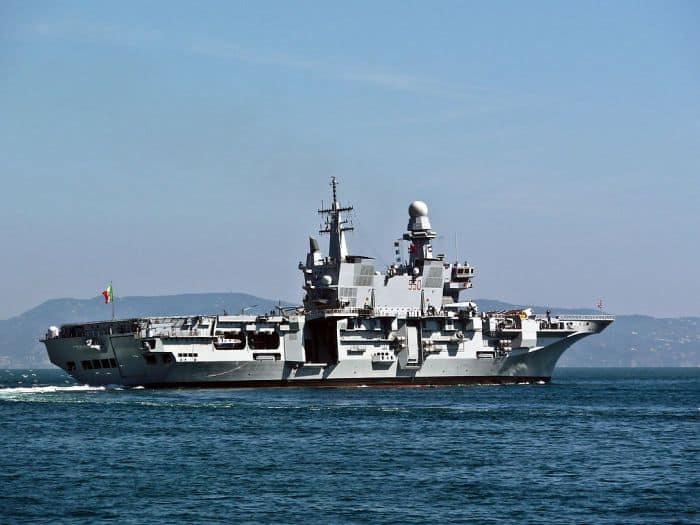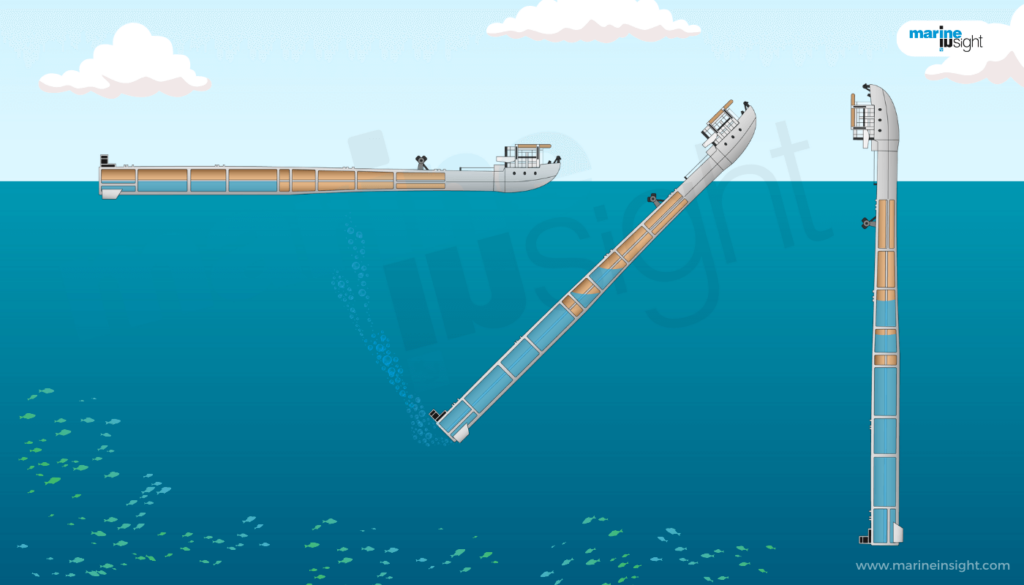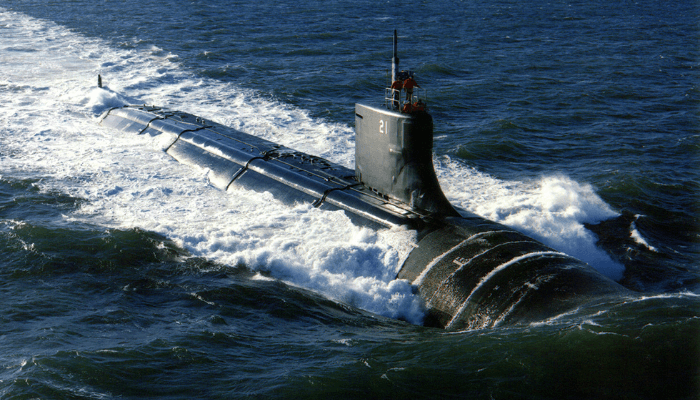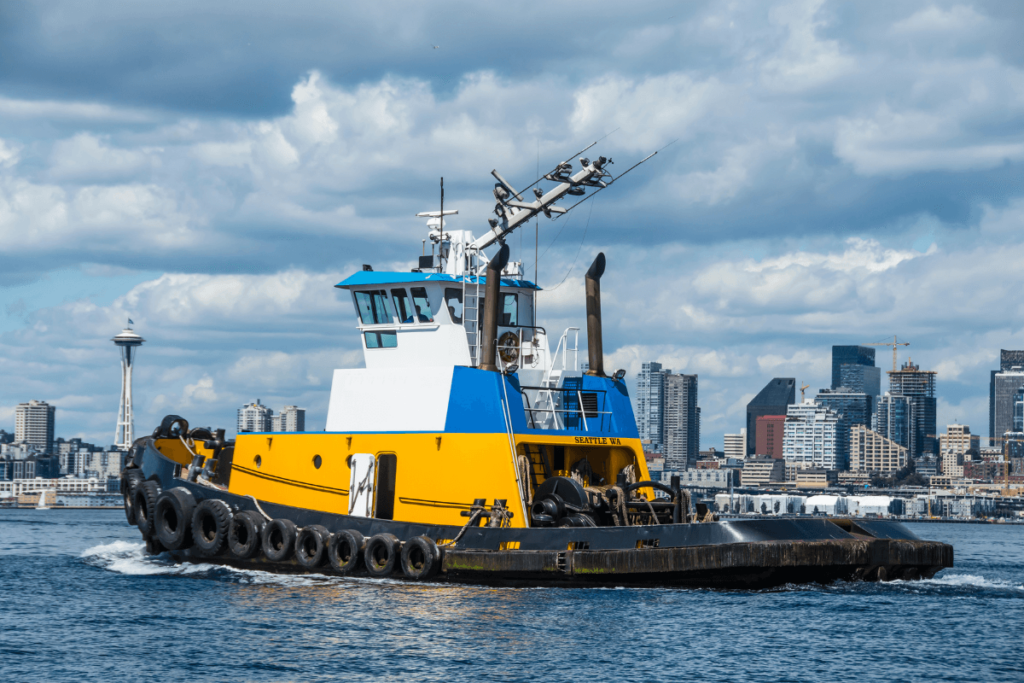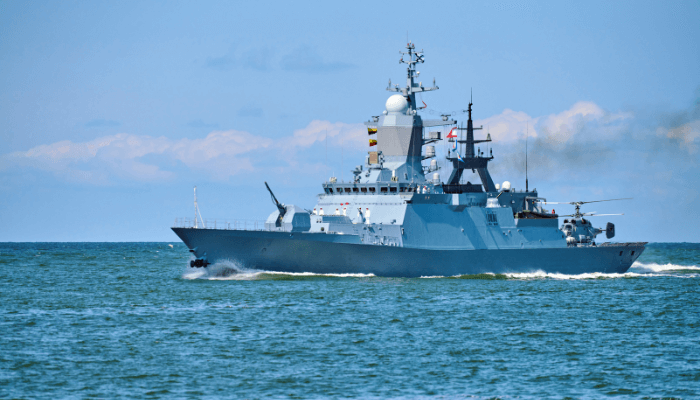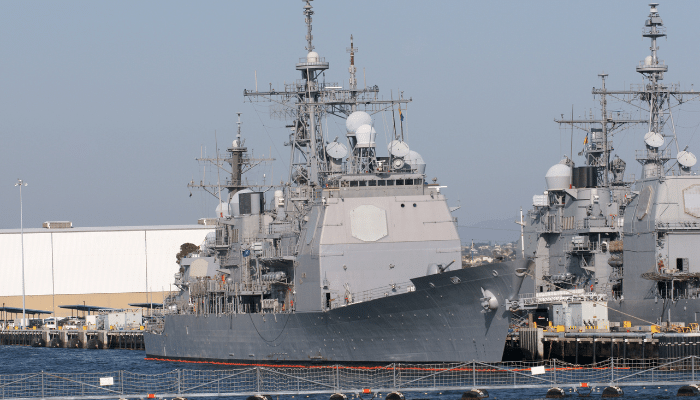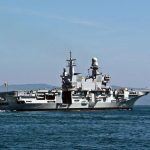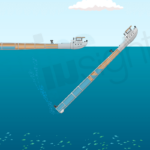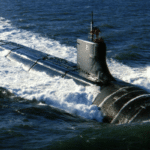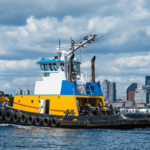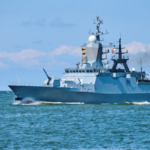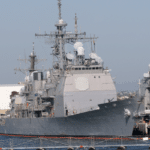What is A Hospital Ship?
A hospital ship is designed and constructed to serve as a medical facility similar to hospitals, nursing homes, or other healthcare infrastructure. In other words, a hospital ship replicates a land-based comprehensive medical facility, whose features depend on size, type and requirement.
The need for hospital ships dates back centuries, even before the World Wars, when warfare and battle at different locations around the world warranted the construction of these special types of vessels. So, since then, hospital ships were mainly built as military vessels to serve as makeshift healthcare facilities required during times of crisis like wars or international conflicts when a large number of people, both armed forces and civilians, need to be treated as a result of wounds, injuries, and other various health-related problems.
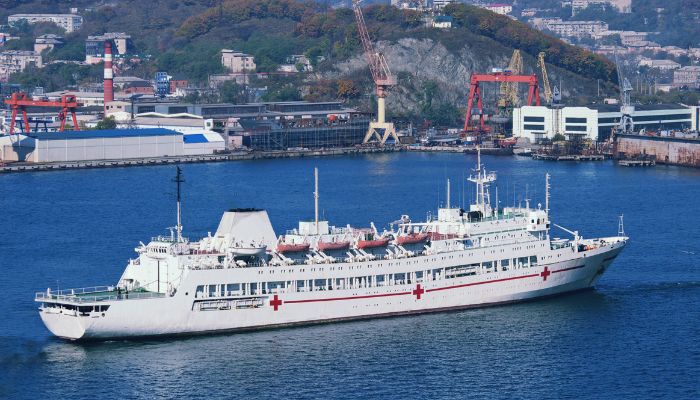
However, sometime back, during the gruelling COVID-19 pandemic that gripped the world, the need for hospital ships again augmented unprecedentedly. During worse times of the pandemic, as hospitals got overwhelmed, many vessels, both dedicated military ones already serving as hospital ships and several passenger and commercial vessels, were temporarily or permanently converted to hospital ships.
In the United States and other European countries like Italy or France, where the virus took a heavy toll, the need for hospital ships escalated significantly. Even after the pandemic, the Russia-Ukraine conflict has again entailed an uptick in hospital ships as several people from both sides, including civilians and military, are badly affected.
Generally, most hospital ships are converted from existing commercial or military vessels, while some are indigenously built. Depending on the requirement, they vary in size and range. Externally, they are primarily white and bear the signatory red cross symbol on their paintwork, like ambulances or medical facilities. They take a special red-cross flag in addition to their classification flag.
Design and Construction of Hospital Ships
As most hospital ships are mainly derived from existing commercial or military vessels, they do not have much difference in their structural design. From a design point of view, they do not have any requirements for speed or power as they are in-situ treatment facilities that serve as long-term care centres and do not need to adhere to a specific timeline.
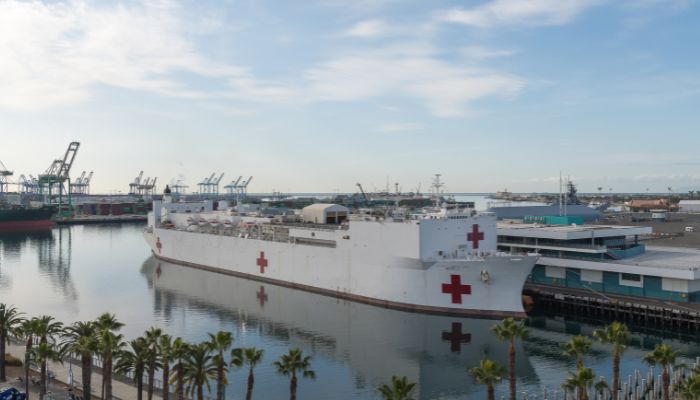
However, in times of crisis, they may require additional speed or power to reach places of demand for the onboarding of patients and medical crew on an urgent basis. While commercial vessels (mostly tankers or bulk carriers) are low-speed, those made out of older passenger or military vessels have higher speeds, as we know.
The main requirements for hospital ships
Availability of adequate space
In terms of space, we mean the necessary and adequate volumes for the proper accommodation of patients, health workers, medical crew, and of course, all the required equipment, paraphernalia and consumables like medicines, chemicals, or drugs on board.
For instance, when exhausted in a land-based hospital or care facility, any emergency drug or medication can easily be procured from anywhere. In contrast, a hospital ship needs sufficient space to stowage drugs, medicines, chemicals, and other essential consumables and products required in the healthcare sector.
A hospital ship needs to de-port at any shore to re-load the indispensables during long-term demands arising during a pandemic, long-term war or conflict.
Furthermore, the nature of arrangements within a hospital ship is also an utmost priority to a designer. Centralisation and optimisation of the available spaces based on requirements and degree of criticality are crucial to enhance the design. For instance, the surgery or critical care department should be arranged within a single level or tier.
Similar to land-based hospitals, hospital ships have an extensive arrangement of different spaces like medical facilities, intensive care, general ward, operating rooms, X-Ray, screening centres, and so on. Other accommodation spaces, including dining and utility spaces, are also allocated for the medical crew and staff, along with the vessel’s staff in general, like general cargo vessels. The plans for fire safety, control, and insulation are given special considerations for containment and safe evacuation in case of an outbreak.
Utility
In terms of utility, we mean the suitable environment and conditions replicating a full-fledged medical facility. This may range from air-conditioning to refrigeration necessary for various drugs and chemicals, from high electrical power consumption as expected for the continual running of multiple systems and equipment to oxygen purification plants required for high-level oxygen supply. Moreover, another essential aspect in the design of hospital ships is accessibility.
This is for convenience in the mobility of patients and all forms of healthcare workers from one place to another with ease and in short periods as and when required, based on the nature of the emergency. Accessibility between different levels is also crucial. Hospital ships have advanced ramps and elevators for improved mobility of patients and healthcare workers from one place to another. Hospital Ships are also characteristic of improved ventilation systems.
Stability and Seakeeping
This is of paramount importance for hospital ships. Patients receiving treatment or incapacitated people needing exceptional support are already in a tenuous state of health. So, if this is further aggravated by the vessel’s behaviour en route, that is a severe problem.
More critically, during surgeries, there should not be any inconvenience or disturbance regarding the vessel’s stability, as that may cost a life! Hence, for all practical purposes, hospital ships are designed, built or refitted, and operated in such a way that it remains on the greater conservative side of the design philosophy of vessels like passenger ships. The hospital ships should be least responsive to seakeeping and stability changes among all forms of ships.
In technical terms, hospital ships should aim to have the least roll periods. This amounts to a higher degree of statical as well as dynamic stability. While only some hospital shops are indigenously built, most are retrofitted and converted from existing ones like cargo vessels and passenger ferries.
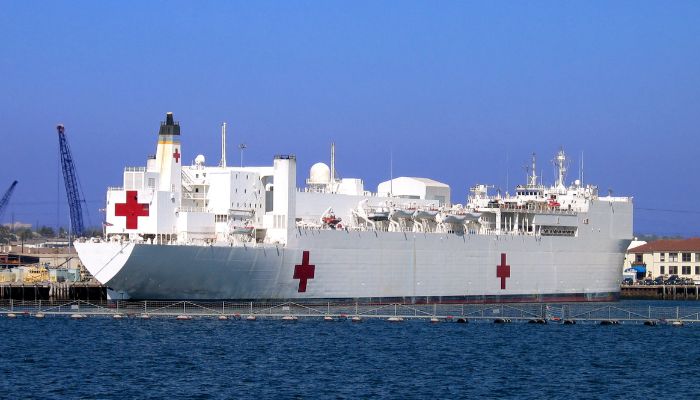
From a design point of view, passenger ships may be inherently stable. However, cargo vessels need to be equipped with additional systems like anti-roll mechanisms and structural refits to reduce the effect of rough seas. Anti-roll tanks, fin stabilisers, gyro stabilisers, bilge keels and thruster systems are incorporated in hospital ships on a wide scale.
Other than external and additionally installed means, these kinds of ships’ weight distribution is taken care of through the proper disposition of spaces and ballast tanks. Often in previously existing cargo ships, the entire tankage is drastically altered to cater to the improved stability characteristics of the vessel. As speed is not a very big priority of the vessel once again, often this is compromised by increasing the weights and ballasting within suitable limits.
However, the main purpose of hospital ships is to house patients, medical staff and crew, so a large superstructure must be built. Often the superstructure is rebuilt or extended to suit the requirements of retrofitted vessels like tankers or bulk carriers.
So, as the high superstructure cannot be avoided, this becomes an issue from the point of view of stability. Hence, designers have to carefully optimise the various parameters of stability meticulously. The vertical accelerations are also to be kept at a minimum.
In terms of operations, hospital ships mostly try to avoid rough sea states. However, in the case of these sea states, they have all means to improve the seakeeping characteristics in the best way possible. Critical tasks like surgeries should be avoided during inclement weather conditions. Even at zero-speed conditions, seakeeping characteristics are aimed to be kept to a maximum level.
Structural Needs
From a structural point of view, hospital ships are typical to cargo or other general-purpose carriers. Not much is done to improve the overall hull structure for converted vessels in good condition as the saved costs can be optimised on higher expenditures on the internal facilities and systems on board. However, additional levels of strengthening are present for hospital ships under the military flag as per design regulations.
Resistance, power, endurance, and electricity
As speed requirements are low, the power requirements to achieve higher speed levels are not very important. However, power to sustain hotel loads is given utmost priority. The onboard power consumption for various facilities and systems is very high. So, several powering sources of high rating is present. Provisions for standby and emergency power and means of backup supply like gensets, DG sets, etc., are installed in high numbers.
Emergency gensets should be capable of supplying power even in a total blackout state and when the vessel’s main propulsion system is stalled to continue supporting the patients on board. For the calculated hotel load consumption, a safety margin of at least 10% surplus is given for all practical purposes.
Now, high values of power consumption amount to higher consumption of fuel. So, adequate provisions for fuel, along with surplus amounts, are catered for. Moreover, from a design point of view, the endurance of hospital ships is accounted for at a much higher margin considering worst-case scenarios when the vessel needs to be afloat for prolonged periods and cater for patients at total capacity. Thus, tankage for fuel supplies and storage is given very high priority.
As for the main propulsion systems of the vessel, conventional means of propulsion are preferred, mostly for retrofitted or converted vessels. However, modern designs feature pod propulsor or azimuth propulsors. As discussed above, the mechanisms for higher stability and seakeeping are present in all hospital ships.
You might also like to read-
- What are Tug Boats: Different Types And Uses
- Different Types Of Roll-On Roll-Off Ships
- Watch: Global Mercy – World’s Largest NGO Hospital Ship Unveiled
- Hospital Ship Armenia: The Most Horrifying Incident during the World War
- What Are Ship Portholes?
- What are Mercy Ships?
Disclaimer: The authors’ views expressed in this article do not necessarily reflect the views of Marine Insight. Data and charts, if used, in the article have been sourced from available information and have not been authenticated by any statutory authority. The author and Marine Insight do not claim it to be accurate nor accept any responsibility for the same. The views constitute only the opinions and do not constitute any guidelines or recommendations on any course of action to be followed by the reader.
Do you have info to share with us ? Suggest a correction
Latest Type Of Ships Articles You Would Like:

About Author
Subhodeep is a Naval Architecture and Ocean Engineering graduate. Interested in the intricacies of marine structures and goal-based design aspects, he is dedicated to sharing and propagation of common technical knowledge within this sector, which, at this very moment, requires a turnabout to flourish back to its old glory.
Subscribe To Our Newsletters
By subscribing, you agree to our Privacy Policy and may receive occasional deal communications; you can unsubscribe anytime.



